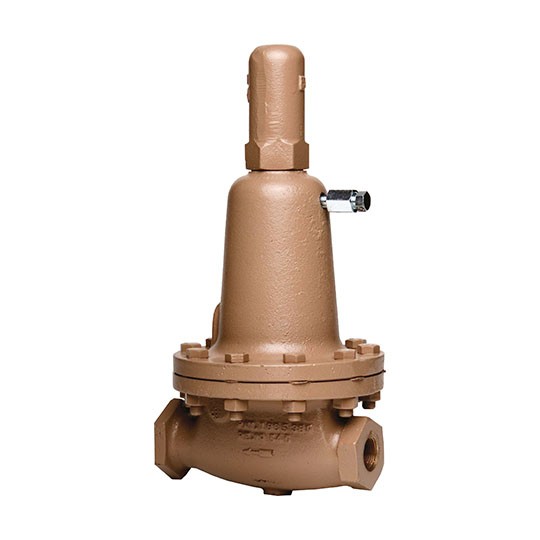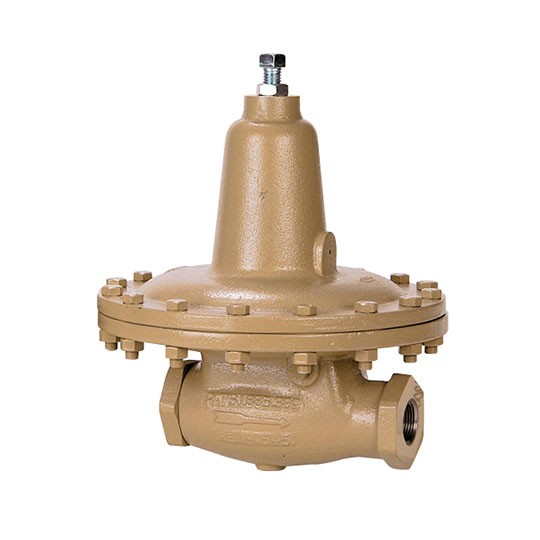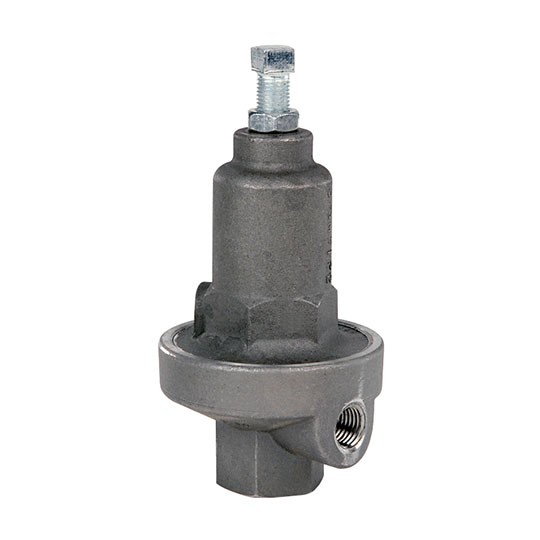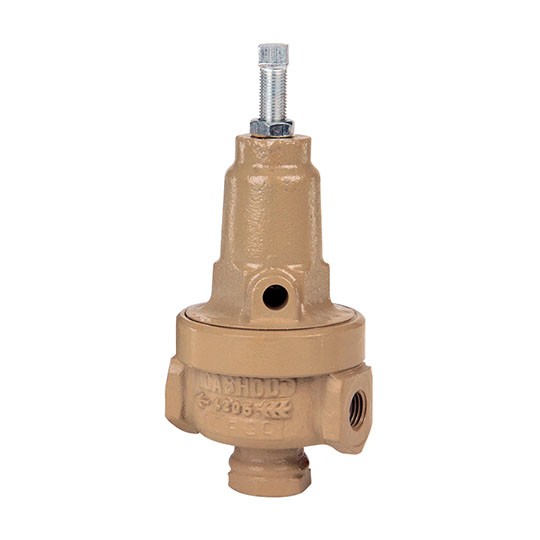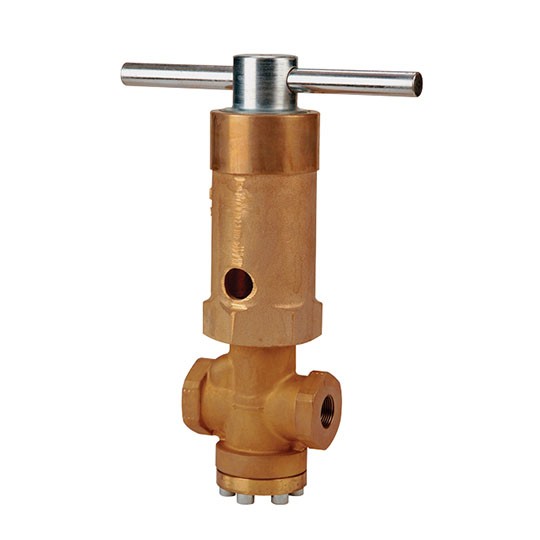Tryckreducerande regulatorer
Tryckreducerande, eller självverkande regulatorer (även kallade tryckreduceringsventiler) utgör majoriteten av alla regulatorapplikationer. Syftet med den tryckreducerande regulatorn är att reducera ett högt tryck, av gas eller vätska, till ett lägre tryck. Den håller även det lägre utgångstrycket konstant. Den här typen av regulator kan ha två typer av tryckavkännande element – kolv (piston) eller membran. Membran ger generellt en högre känslighet.
Tryckreducerande regulatorer – vanliga storlekar och konfigurationer
Enkelt uttryckt kommer det alltid att finnas ett trycköverskott och detta tryck måste, i många fall, reduceras till ett lägre tryck som systemet kan använda. I många tillämpningar kan en tryckreducerande regulator styra en process bättre än en reglerventil.
Vanliga storlekar för tryckreducerande regulatorer varierar från 0,25 till 6,0 tum, men regulatorer som är större än 2,0 tum blir ofta väldigt kostnadskrävande jämfört med en reglerventil.
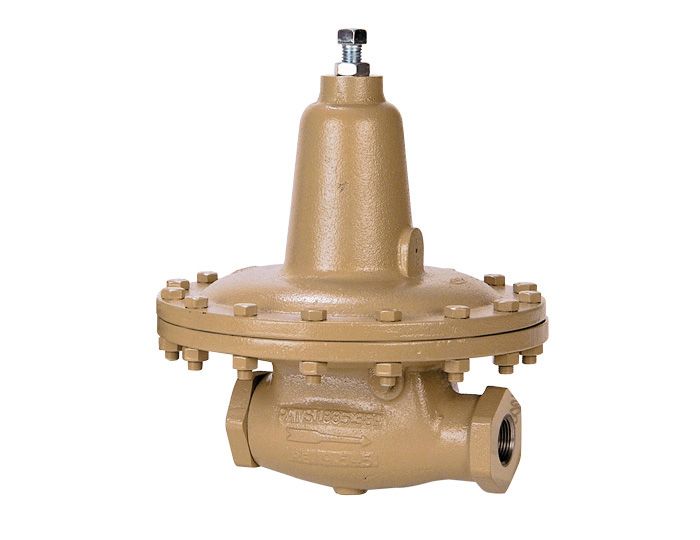
Models 1000HP-1+6 or 1000HP-1+8 are differential reducing regulators used to maintain a relatively constant pressure differential between the fluid loading pressure – P Load, and the valve’s outlet pressure – P2, with P2 pressure higher than P Load pressure. Model 1000HP-1+6 is a single-diaphragm differential construction.
Model 1000HP-1+8 is a double-diaphragm differential construction. A double-diaphragm design prevents the fluid passing through the body from mixing into the loading fluid pressurizing the spring chamber in the event of a diaphragm failure. The design takes advantage of all the features of the basic 1000HP reducing regulator; see Technical Bulletin 1000HP-BASIC-TB. The availability of optional construction and body and trim materials is limited to those indicated in this Technical Bulletin.

The Model 1000LP is a high capacity, low pressure regulator used to control downstream pressure Sizes are from 1/2″ through 1″ (DN15 through DN25). The 1000LP is the low pressure version of the Cashco 1000HP reducing regulator. The designs are essentially equal, except that the 1000LP has a larger diaphragm area which is required for the lower operating pressures. The unique internals design allows use in a multitude of applications, including process fluids that normal pressure reducing regulators cannot match.

The Model 3381 is an inexpensive, bronze pressure reducing regulator designed to handle small to mid capacity flow rates in general service. This unit is capable of controlling outlet pressure to a level between 2 and 200 psig (.34 and 13.8 Barg). Designed to control a wide range of fluids including industrial gases, air, oil, steam and water.

The Model 345 is a piston style, heavy duty, high pressure reducing regulator that can include balanced trim with a TFE or nylon seat for controlling down stream pressure between 50 and 3000 psig (3.4 and 207 Barg), with inlet pressures up to 4000 psig (275 Barg). The metal seated version is an unbalanced trim design. Where trim wear is expected, metal seating surfaces may be stellited. Sizes 1/2″, 3/4″ and 1″ (DN15, 20, and 25). Available options include flanged end connections.



